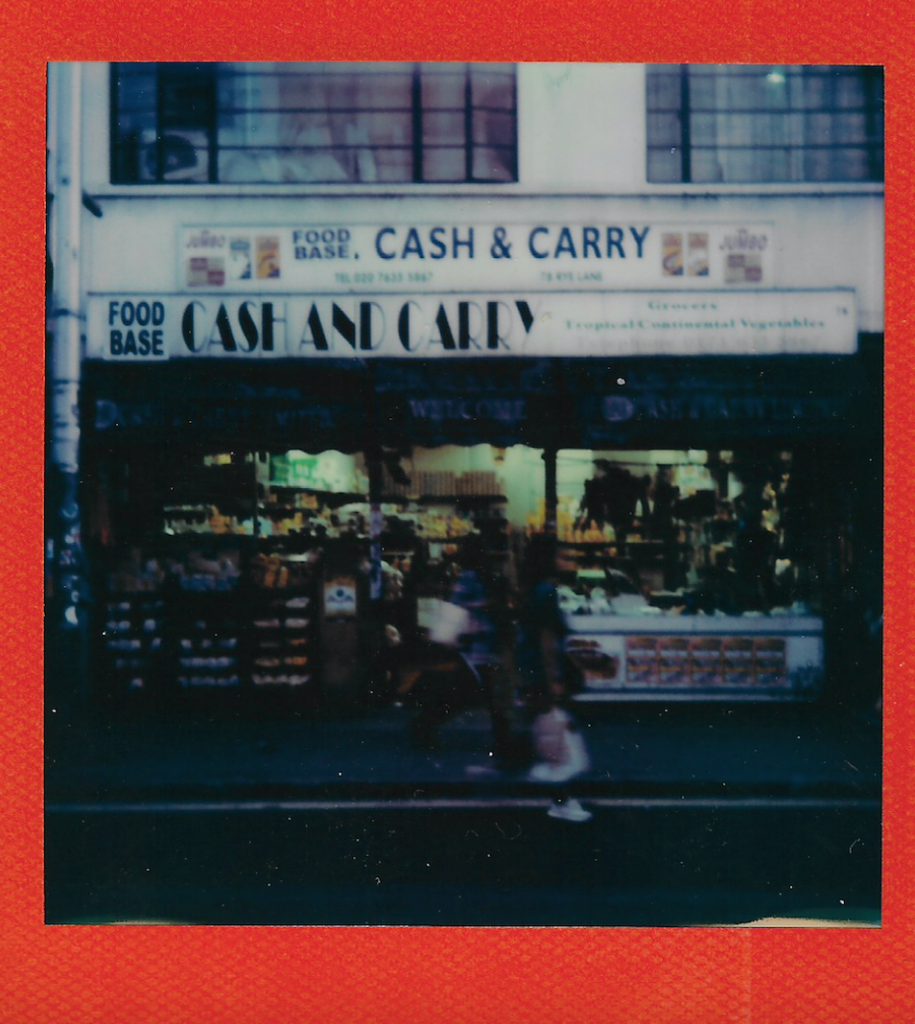
Nocturne: An exhibition focused on the creative and Romantic aura that the night personifies.
I visited ‘Nocturne’ at midday, with the sun shinning; this was a mistake. ‘Nocturne’ should be viewed at midnight, not midday. The collection of paintings and photographs included in ‘Nocturne’ float on the white walls of the gallery and linger in the viewer’s mind. The milky veil and shadowy haze obscure and distort the figures which emerge out of the gloom in fragmented parts. An arm, a foot, a face in profile all appear disembodied at first glance. Just as in the dark of night, the eye needs time to grow accused to the lack of light, and after a few moments of blinking, reality reconfigures itself in the dark. The viewer becomes nocturnal; activated by night.
The dream-like quality, which unites the work of Jeremy Stokes, Peter Carrick and Oliver Pearce, is created from the prominence of dusk-like purple and blue hues next to the bright yellow colour of street-lamps. The bruised colour palette and liminal light pervading all three artist’s work is inspired both by the light reflected into the sky from the city of London which burns on the Dulwich horizon, and the work of Matthias Grünewald favoured by Stokes, Carrick and Pearce.
The Romantic Period pervades the work of these three Camberwell graduates, particularly in the Oliver Pearce’s integration of gothic arches framing the theatrical collage of objects, people and animals heavily overlaid with symbolic meaning. All three of these artists also draw inspiration from their local habitat in south London: The Hermit’s Cave, on Camberwell Green, being a favourite haunt. Their work has the stillness of night and haunting mystery, which leaves the viewer in a contemplative state.
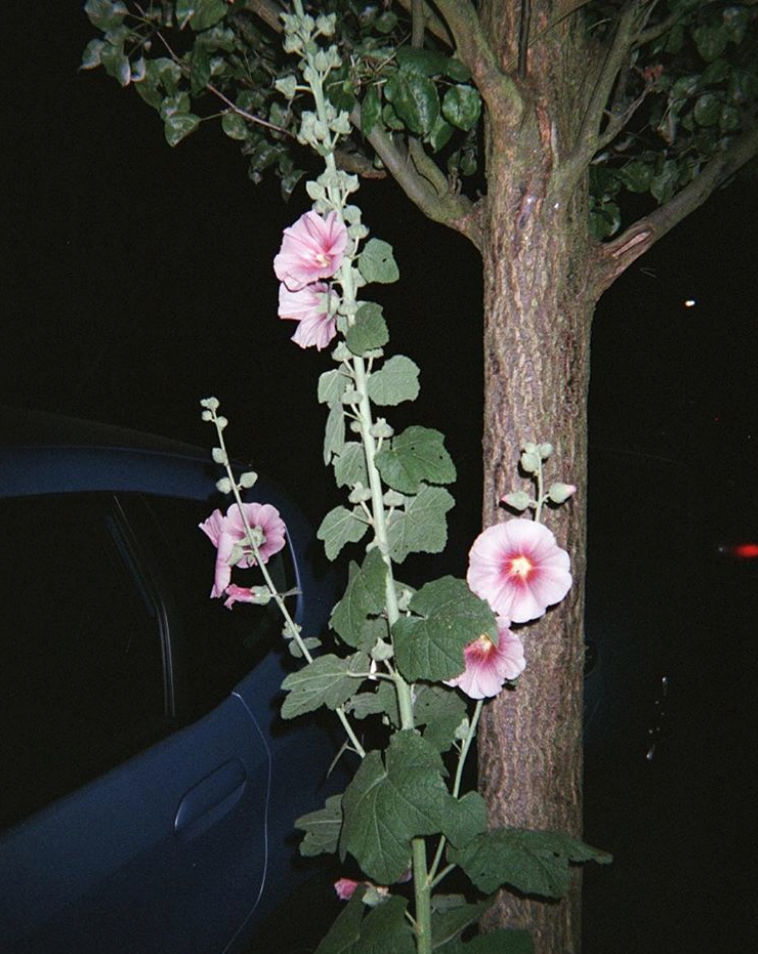
Introduction to the Artists:
JEREMY STOKES aims to make work that captures the Holy Spirit, searching for divine beauty within a thread between natural still life and the metropolitan underbelly. This is done through the medium of photography, as photography is the study of light.
PETER CARRICK is a painter that uses collected photography and nostalgia to create figurative scenes upon canvas. Peter explores memories as an interpretation of actual events; as a way to comment on voyeurism.
OLIVER PEARCE’S practice is rooted in the history of art, to develop visually striking imagery of varied themes – exploring the human psyche and mythologies in rich layers of oil paint.
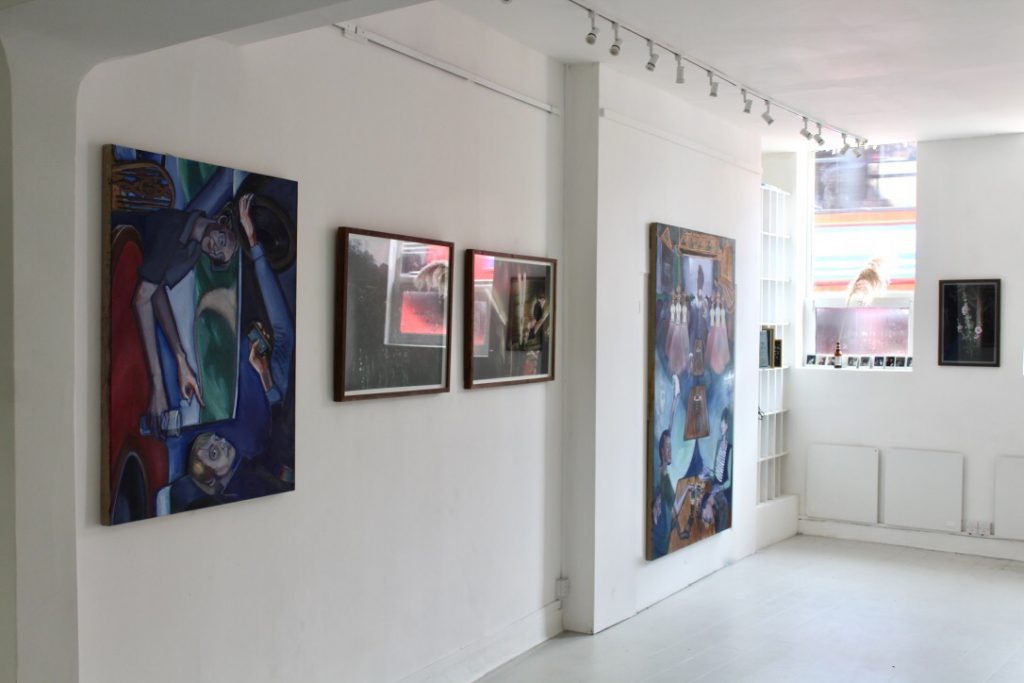
Interview with the artists:
Question for Jeremy:
The liminal state of dusk seems to pervade your compositions in this show- why? Are you conscious of time/shifts in light when taking a photograph? How do you think photography captures time?
JEREMY: Dusk plays an important part in a lot of my work – in particular this show. That is because it is a transitional period of time, so hopefully portraying a transcendental aesthetic. As I believe art should aim towards being spiritual, which it has departed from being. From this my photographs capture more muted tones and colours, illuminated by light on the subject with space to breath and contemplate within.
My passion for photography comes from the fact that it is a study of light, and to draw with light itself. So one must be in search for that light on a metaphysical level. It helps me to appreciate and to see the divine beauty of existence more, that is within all parts of the world. So thus I am very conscious of light and time when taking my photographs.
Photography is a mosaic of time. A slice of existence frozen. Yet, time itself does not exist. It is only a measurement of movement/change, there is only the present. It is a long discussion, but I feel simply put. Photography is a projection of our inner self and refection of the outer world we interact with, and thus it is a fossil, relic and prayer. As individuals, what relic do we keep, what do we try and capture, project and prayer for? I believe the lens, print and illumination should aim for the beautiful, dignity, grace and give thanks to the omnipresence of being itself.

Question for Peter and Oliver:
How do you begin a painting? Do you often work at night?
PETER: Painting is an automated exercise which you get lost in and that can be quite dreamlike because the works take on your thoughts as you paint. The initial idea for ‘Nightcap’ came from a dream which I then made drawings from. Painting translates the mood of the subject. I collage photos of different poses so there is a performative role that lends itself to drama and film.
OLIVER: Beginning a painting is like beginning anything. Once I’ve pushed past the procrastination and I’m physically painting, most rationality and strategies fade away and I’m at the mercy of the oil and canvas. My paintings are rarely pre-formalised, and I don’t actively source material, so I find my imagination and the paint merging, something quite exiting but unplanned. Knowing a final image is made up of many under-layers and previous compositions (a technique known as pentimento), this gives me a lot of freedom when starting a painting.
I do prefer to work at night. It is when I’m more actively creative, something I have in common with my grandmother, who’s a night owl. The night gives birth and creates the next day at midnight and I find the aura and colours at that time especially enchanting. The fact you are up late at night also adds an immediacy to the work. I think: “ its now or its tomorrow, I’m right up on the line before I sleep and I’m another day older.”

Questions for all artists:
1. What inspires you?
JEREMY: The miracle of life itself is my inspiration, in all its flaws and glory. There are many artists whom inspire me, particularly the ones who ponder on the mystical and mysterious questions of life in a beautiful and poetic manner. It is an endless list, yet some who resonate with me greatly from recent years would be: Luigi Ghirri, Chris Killip, Jonas Mekas, Arvo Pärt and Andrei Tarkovsky.
PETER: I see something in the street or a moment between people which become more significant as time passes. The same moment or symbol will repeat itself and take on a meaning of its own. I also love watching films and reading so I reconstruct certain parts to make them autobiographical. Other paintings inspire me: ‘Blue Night’, and ‘Summer Evening’ by Edward Hopper especially have such a beautiful melancholic feeling to them.
I also admire Henri Toulouse Lautrec and Edvard Munch also for their depictions of night scenes. Bi Gan’s ‘Long Days Journey Into Night’ is an amazing film, with a 50 minute dream sequence filmed in a single take.
OLIVER: What inspires me changes all the time and can be something very separate from art: such as people close to me or something random, like birds, beer and dogs. However, my artistic inspiration recently comes from medieval artworks and history from England. Cathedrals, such a Salisbury, I have a deep love for and also the various ancient churches doted around the wolds of Wiltshire where I grew up. I often think: “Churches are preserved so long as people like them, even if they don’t like them much”. I find their ambience and design, made over so many years with such care and compassion by many people through their love, perhaps forgotten now, truly ore inspiring. It levels my head when one considers what art or an artist can be. I am also inspired by the modern wonder: youtube, as well as friends and picture books.
2. Where did the title of this exhibition emerge from, and what does the word ‘Nocturne’ mean for you?
JEREMY: The title and exhibition itself has been a natural growth and conversation of our collective thought process and mindset. It just made sense to put a name and homage to a chapter in which we grew into and to keep growing from. Nocturne is a romance, an aura, a feeling and nostalgia, light footstep on heavy matter, light through a veil, neon glare on eery streets, peculiar characters alongside lonesome thoughts, a vesper, an evening prayer.
PETER: We have enjoyed a lot of late night walks and discussions and Nocturne came to symbolise dusk and the beginning of the energy and freedom that comes with night. Because of the Classical nature of a piano Nocturne to be both beautiful and dramatic benefitted the theatrical and also sinister potential for certain works.
It also gave us the perfect opportunity to collaborate with LateWorks. ‘FenTrio’ made a piece of improvised music in response to the exhibition, which was in turn was responded to with poetry ‘Gobjaw’. Thus the mood of the exhibition became a source of energy that led to a conversation between different creative mediums so I am very grateful for their part in the exhibition. The recording will soon he released on Spotify.
OLIVER: Working with close friends can be a blessing and a curse. We all know what we want to do and what we want from each other, but articulating these themes and central ideas to our practices and passions takes a lot of debate and critique. When we all decided upon the theme for the show and the works included, it was probably the first time we all agreed on something! So instantly we thought: “This is it! here we go!”- put in the energy and it worked!
Nocturne, I would always associate with Chopin. The eerie beauty of a Romantic statement coughed into the night in some Parisian or Dickinson garret. I thought this matched the aesthetic of our current works. We decided early on we didn’t want an overly floral title, just a singular work with a meaning that could mould our works together in a conscious and formulaic manner.
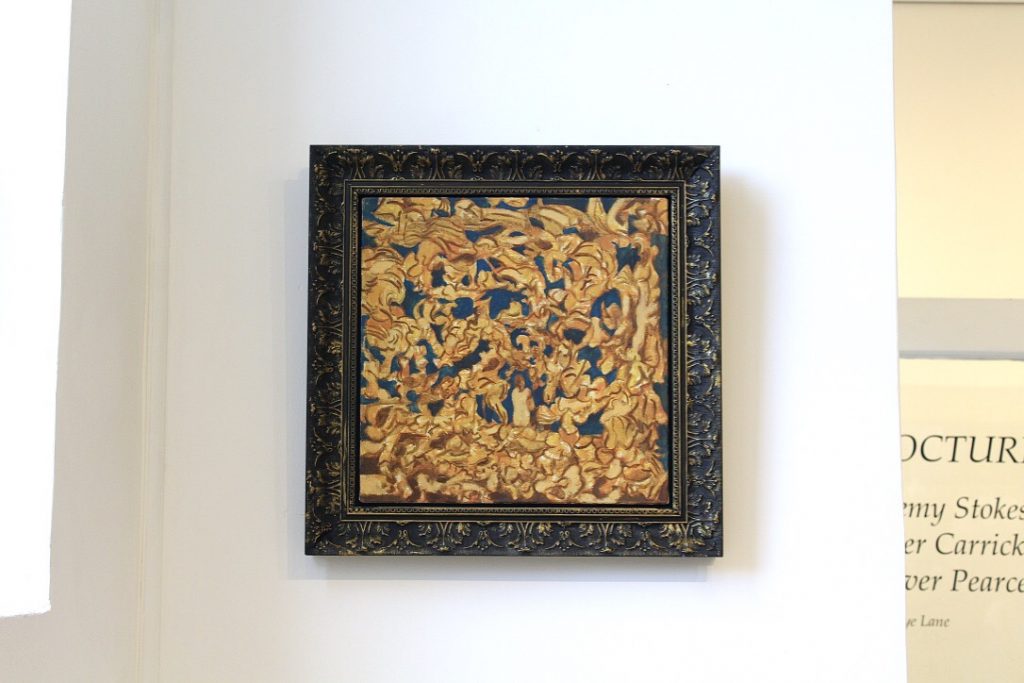
3. Mythology and Mysticism are themes underlying in this exhibition, do you have a favourite myth, and if so does it manifest itself within your work? What does mysticism represent to you and how do you think it overlaps with the plastic arts?
JEREMY: I feel Peter’s and Oliver’s works are influenced more on mythologies, especially Middle Age and Ancient Celtic stories. I am interested in them, and also Ancient Greek epic poems and the Old Testament stories. Myth implies non-objective truth, the New Testament is when human mythology stopped and the word became flesh. Mysticism fascinates me, Carl Jung’s writings and illustrations in his ‘Red Book’ is a good insight, as with the visions of William Blake, St Hildegard von Bingen, the lives of the saints and in general the phenomenal nature of the Holy Trinity.
PETER: I remember seeing a painting in my parent’s house of a landscape where it looked as if a wolf emerged out of the distance. This reminded me of the fable ‘The Boy That Cried Wolf’. Currently we are exposed to so much political and social alarmism and imaginary danger our reactions to actual events become diluted. The fable has a clear sense of right and wrong and with current events there are so many different reactions, like the history of narrative painting whereby one image is just one person’s response. The magic of these fables is that words and music contain a completely different pictorial quality for every single person who reads or hears it.
OLIVER: My favourite myth is: don’t eat cheese before bed, it gives you bad dreams.
Mythologies which I am interested in recently are the books of Austin Osman Spare, such as ‘The book of Pleasure’ and ‘The Focus of Life’ and the ‘Aeneid’ by Virgil, both quite hard to get to grips with but any given page can flair the imagination with beautiful and surreal imagery. Also the ‘Book of Revelations’.
The history of painting in itself is full of mythology and mysticism through its various Movements and characters, ranging from Heronimaous Bosh and Matthias Grünewald to Francis Bacon and Tal R. Even myself and contemporaries, small or large, contribute and engage in the long tradition of imagery and myth, something I take pride in.

4. Monochrome or polychrome? What is your view of colour in night images? Can it be used to manufacture a sense of darkness better than a monochrome palette?
JEREMY: The use of colour adds to the sense of darkness, better in an image or space, it emphasises what is missing more when a part of something is there.
PETER: Darkness is only relevant so when compared with the light, so we wanted to work to have this balance. This contrast is what gives an atmosphere its poignancy. Darkness gives space for the viewers imagination and draws your attention to a source of light. On the other hand colour fundamental in creating a mood, such as the blues that contrast with the glow of a mobile or light leading your eyes around the canvas.
OLIVER: Polychrome. I love colour and without it I would be bored!
5. How do you think artificial light has influenced historical images of night? Do you have a favourite image that summarises this?
JEREMY: Candlelight has always influenced painters to illuminated their work. Good examples of this would be Caravaggio’s ‘Conversion on the Way to Damascus’ alongside ‘The Crucifixion of Saint Pater’ in the Cerasi Chapel of Santa Maria del Popolo in Rome. Film Noir and night photographs of William Eggleston serves as an influence.
PETER: Painting manufactures the sense of light to give draw your eye to its a certain aura. This poetic nature of light is in a sense artificial, but can be used to create a transcendental quality. My favourite example of this is Raphael’s ‘Transfiguration’ where the light behind the central Christ illuminates his levitating body. Your eyes follow the pointing arms which reach upward toward him. Also this work’s foundation in Christianity I see as hope and belief in many modern settings.
For example, my Bingo painting is based on the Tooting Gala Bingo, a huge art deco interior where there is an eery silence and every individual is hoping for themselves to win. These are symbols which I have used for multiple paintings. Instead of heightening someones importance they have an accusatory role. In ‘Bingo’, the figures reach towards their pints, the same central figure at once winning and losing, with the spotlight highlighting their success and failure. Again there is a reflection of motifs and a cyclical succession of events, which can be seen in all my paintings.
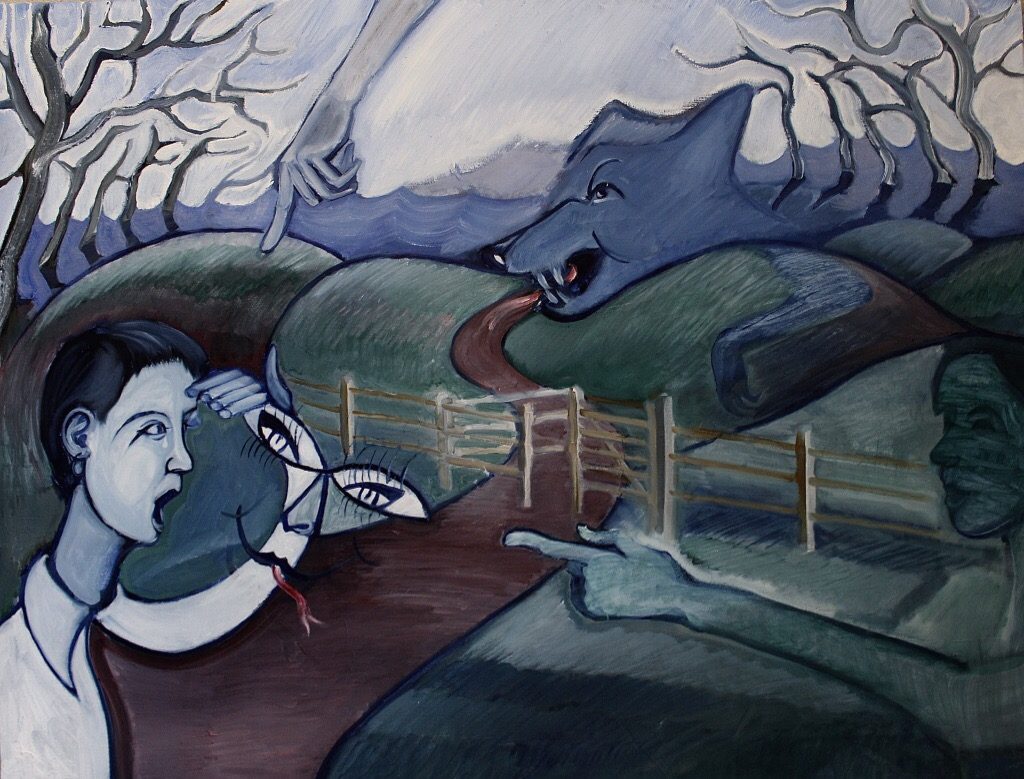
OLIVER: It is interesting to think how recent artificial light is to the story of painting. How candle and gas light came before and probably moonlight before that. One artist I recently thought of in conjunction to light is Aubrey Beardsly, whose lines look so defining and poignant, as if they were drafted in near darkness. A painting I saw recently in Tate Britain that also captures light is Henry Fusselis’ ‘Mid Summers Night Dream’: worth a look.
6. What role does light play in your work?
JEREMY: Light and the pursuit of it, is the meaning of my work.
OLIVER: Natural light is of massive importance to painters, rarely if never would a painter say they can’t and wouldn’t paint with natural light! I can see the truth in this, however painting at night I’ve always painted with a 40 watt lamp light, that has an orange glow I try to transfer into my paintings.
The way in which I work, is that I pick out forms and figures from the canvas as if they were always there, hiding slightly in brush marks. The lamp light makes these shapes more apparent to me, it is like when I’m painting in day light I always find myself squinting my eyes at the canvas. Painting within the dimmer areas of the light spectrum I find it can make the paint in sunlight have more luminance, and if I’m lucky, the paint can retain an etherial ora of the night. I took a break to the South of France and the light there is drastically different. When I got back, I made a series of paintings that had a dramatically different colour-scheme and tonal values. On my return, I also became aware of the sensation of the London night, alight with blue sirens followed by a hum of the streets and Phalo Blue sky with red crane-lights, hanging high like Mars. It feels like 1920s Berlin or 1960s America, if you get what I mean.
7. What is next for you/your work?
JEREMY: Through studying, meditating and sharpening my practice, the themes of this exhibition shall stream deeper into my next work. I hope to achieve a remedy, if briefly, to the worlds soulful suffering by my artistic practice. It seems that art should be aim to move in a soulful and spiritually healing direction again. Thus I shall try and help take it there. From this I will be still making photographic art, but also moving images, written poetry, and painting. I am excited to exhibit my development in the future.
PETER: Our next exhibition will include 10 or so contemporary artists. I am making an installation using two hanging stained glass panels which face each other with light projected downward towards the centre of the room and two recorded conversations which interject each other.
OLIVER: I am planning a show at APT gallery in Deptford alongside about 10 figurative based painters, to take place in September/October this year. Continuing painting in a box with a fox or in a house with a mouse, and going home to my mother for the summer. The year after I’m weighing up the possibility of studying traditional craft painting in Florence or applying to a Fine Art Masters here in London.
An Exhibition by Jeremy Stokes, Peter Carrick and Oliver Pearce 26-30th June 2019 PV 27 June 2019, 18.00-21.00 226 Peckham Rye, London, SE15 4NL
See more of the artists work at:





